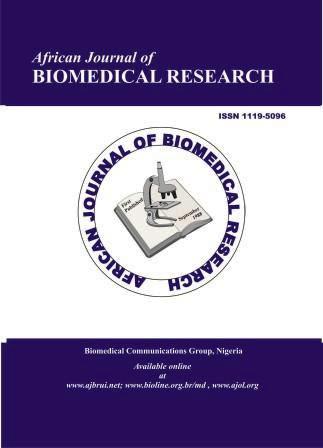Thrombospondin-2 in HIV-Associated Preeclampsia
DOI:
https://doi.org/10.4314/Keywords:
endothelial damage, HIV, preeclampsia, TSP-2, pregnancyAbstract
To determine the serum concentration of TSP-2 in HIV-associated preeclampsia, archived serum samples from normotensive
(n=36) and preeclamptic (n=36) pregnant groups, which were further subdivided by HIV status, were used to measure TSP-2
levels, using MilliPlex immunoassays. A statistical difference was noted for gestational age, systolic blood pressure, diastolic
blood pressure and baby weight (p < 0.0001). Based on pregnancy type (normotensive vs preeclamptic), no significant difference
in TSP-2 levels was observed regardless of HIV status (26.61 ng/ml; 95% CI: 17.52-34.67 vs 25.35ng/ml; 95% CI: 18.32-37.49).
Based on HIV status, a significant increase of TSP-2 levels (p = 0.04) was observed in HIV-positive (29.66 ng/ml; 95% CI:
21.99-38.01) vs HIV-negative (24.34 ng/ml; 95% CI: 16.24-31.48) women. Based on pregnancy type and HIV status, TSP-2
levels were statistically significant between the P+ve and N-ve; and P+ve and P-ve groups (p = 0.01) respectively. The significant
TSP-2 elevation noted in preeclamptic versus normotensive pregnancies, may account for the defective trophoblast cell invasion
in preeclampsia. Based on HIV status, TSP-2 levels was significantly upregulated, which may be attributed to the action of HIV
tat protein. TSP-2 may be a potential biomarker for the early detection of preeclampsia development.










